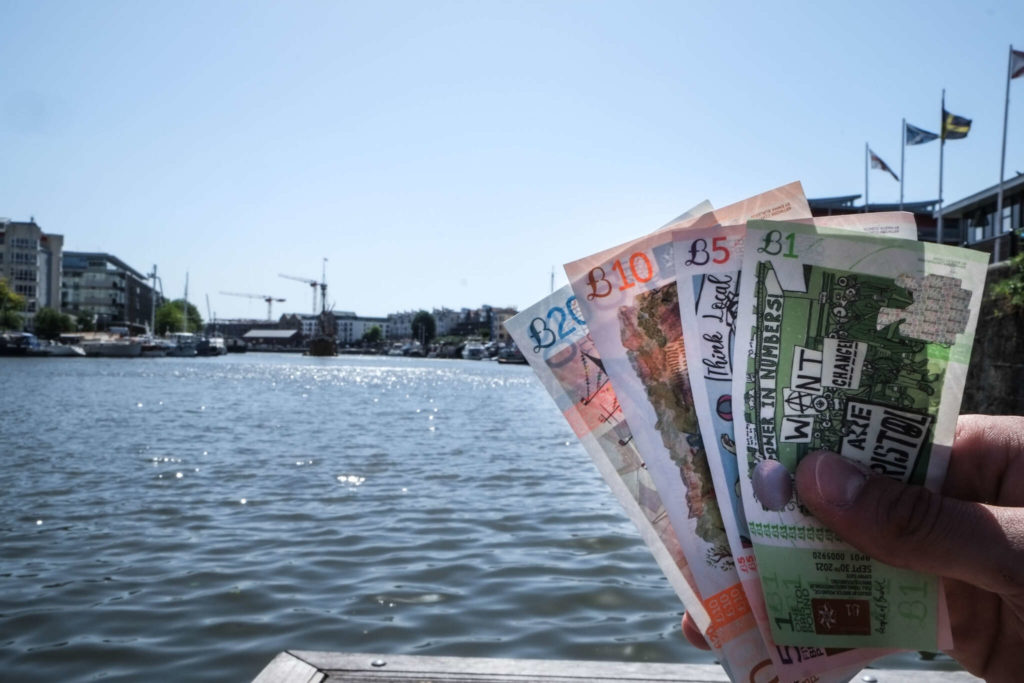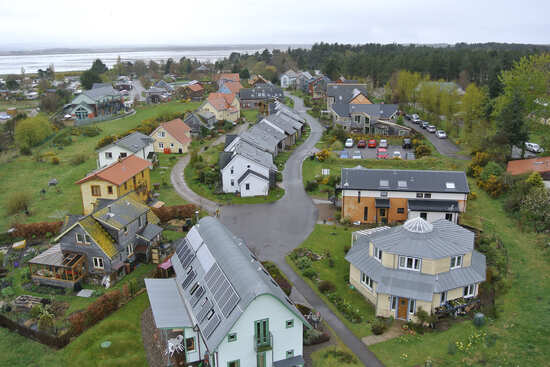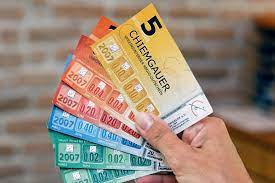Redesigning how we do business, our patterns of production and consumption, or the types of resources and energy we use: these are complex and challenging tasks. To set the stage for success, we might have to challenge some basic economic assumptions and integrate different approaches if we hope to redesign the economy.
An Outdated Economic System Is Allowing Local, Complementary Currencies to Grow
Why do you say or what do you mean by “the economy is failing us”? You might be fairly wondering.
Growth. Infinite quantitative growth – perpetuated via debt – in a world with finite resources is one reason why economic basic assumptions need to be questioned is one reason.
The state of the biosphere, which cannot be factored into economic decision-making and behavior and is only seen as an “externality” – progress on carbon markets has been on hold since COP26 in Madrid, where no real progress was made – is reason number two (though there’s no particular ranking).
States supporting legacy industries – aka lobbying – through various forms of direct subsidies and tax breaks, making it harder for innovative and more sustainable business models to get to the spotlight is one more reason. The recent 717 Amendment of the Common Agricultural Policy in the EU is a mind-blowing example.
Here’s another reason: the current production and consumption systems are too addicted to the take-make-waste logic, resisting the change to circular alternatives processes for as long as legislation allows them to.
The disproportional wealth accumulation that year after year Oxfam’s reports – the latter entitled The Inequality Virus – brings our attention to, with no signs of change at sight.
A huge share of the population who is disconnected – and discouraged – from participating and deciding on economic (and political) issues and being, at least in some way, responsible for it.
An outdated formula to measure “development”, “progress” or “success” – GDP – which considers things that can have an adverse effect on human wellbeing – cigarette or alcohol consumption, ecological disasters, and even war investments – as good (or in the best scenario as neutral) for the economy.
Let’s stop it here: enough shaming the current economic system.
If you’re interested, we have explored some of these issues in-depth in our articles: why a sustainable planet means the economy needs to change or how the coronavirus crisis is showing the economy needs to change.
There isn’t one solution to re-design the current economic model.
Luckily, there are a couple of them! Many of which have been tested and developed on the best playground for experimentation and trial (and error and improvement) there is – at the community/place and local scale.
One of them are local currencies.
Why Are Local Currencies Growing?

Nowadays, a complementary currency movement that enables communities to create and exchange their own money seems to be getting traction again.
On one hand, because the growing instability in the international monetary system is provoking serious financial crises from time to time.
On the other hand, because there is a growing recognition of the need to protect and nurture local economies.
At the same time, exploring ways in which local people and local economies can gain greater control over their financial resources helps reduce the dependence on decisions taken elsewhere with little regard to particular social cultures and bioregional resources. Another reason why the local currencies movement is growing.
What Are Local Currencies Exactly? A Simple Definition
Local currencies are currencies that circulate mostly locally and at a community level. They work as complementary to an official, legal currency. They are usually accepted by local traders of all kinds, and they give local residents an incentive to shop locally.
As a result, local currencies help a particular community or region strengthen and decarbonize its local economy. They help build community spirit while reducing people’s carbon footprint and improve local resilience.
Local currencies aim to operate alongside the official currency of a place. They are not legal tender, so no one has to accept them in exchange for goods or services if they haven’t agreed to be part of the currency’s trader network.
So while Euros, Sterlings, or Pounds will always be needed for national and international trade, it becomes possible to promote local trade and strengthen the local economy using a local (complementary) currency.
Another definition of local currency is “when a collective creates its own currency, it tries to solve problems in a material world by defining a unit of account and medium of payment accepted by everyone within that community (Desan, 2014)”.
Ultimately, local currencies are usually complementary currencies that become part of a domestic currency to help achieve a certain goal, like strengthening the local economy or reducing greenhouse gas emissions.
Though they may work well in localized areas with important industries, they may be somewhat idealist across other regions. Let’s take a closer look at some examples before jumping into conclusions.
Printed Local Currencies: Examples and Case Studies
The Bristol Pound

A group of campaigners and financial activists set the Bristol Pound, currently changing to Bristol Pay up in 2012. It comprised a network of +2000 individuals and independent businesses who used digital and paper currency to trade in Bristol, localizing supply chains and keeping money circulating in our city.
On their website, the Bristol Pound CIC says that at its peak, “hundreds of transactions were made with Bristol Pounds every week, amounting to over £1million per year and well over £6million in total.” Bristol’s local currency was used to pay for various things such as bus and train rides or to buy groceries.
The project seems to be now on a new level, under the name Bristol Pay and with the promise of allowing direct payments to other account holders through the online portal where users can pay in-store with the app or card.
The new name and look given to Bristol’s new local currency seems to be related to keeping money inside the area to fund community and environmental projects in Bristol.
Findhorn’s (Scotland) Eko

Eko is a local currency created by members of the Findhorn Ecovillage through a legal entity that was formed in 2002. All the community members and businesses within the eco-village, plus 2 pubs and a café in the neighboring village, accept the local currency Eko.
The local currency Eko brought multiple benefits to the Findhorn community. First, there’s a purchasing power that stays within the local economy – since it’s the only place where it is accepted.
Then in the first year of the system, Ekos are estimated to have generated a turnover of business of approximately £150,000 – an average of ten full spending cycles for each note (Gaia Education, 2021).
The “fiat” money used in the exchange of money was used to provide low-interest loans for community businesses like renewable energy investments or affordable housing.
The Swiss WIR (Wirtschaftsring)

The Swiss WIR (Wirtschaftsring) is a complementary currency, founded in the 1930s because of currency shortages and global financial instability, and used by around twenty percent of Switzerland’s small and medium-sized enterprises.
The WIR currency has an (equivalent) annual turnover of 1.2 billion Swiss Francs and is serving 62,000 SMEs around the country.
Chiemgauer in Bavaria, Germany

Germany’s Rosenheim-Traunstein region is home to one of the world’s successful alternative currencies. It all started out in 2003 as a school project by an economics teacher who wanted to teach finance to a group of 16-year-olds in a unique way.
The teacher and his students – who designed the banknotes, did the administration, and managed the accounts – created their own money to be used in local businesses and shops.
The currency is worth one euro per chiemgauer, and there are notes from 1 to 50 euros. The local currency chiemgauer is only valid for three months after purchase to ensure people spend swiftly instead of saving it.
The biggest benefit of the currency is that it is a good way of keeping the money within the region that it was earned, instead of spending it at large multinational companies paying taxes somewhere else. It is possible to pay in chiemgauer by debit card and local banks, while credit organizations also accept the currency as legal tender.
How Local Currencies Work
Here’s a brief video from the Bank of England explaining how local currencies work:
The Benefits of Local Currencies
In theory, local currencies offer several economic benefits, such as:
1. Local currencies encourage consumers to shop at local businesses, i.e., the ones accepting the local currency;
2. The money stays within the community instead of being exported to large companies in distant countries;
3. Local currencies increase the local money supply, which increases demand and stimulates local production and employment;
4. Individuals and businesses can bypass conventional credit channels (with local exchange trading systems). Local currencies become thus an alternative source of capital for which the interest (if any) will circulate back to the community;
5. Increases the ability of locals to make more informed choices when they go shopping;
6. The reduction of carbon footprints as local businesses are more likely to buy from local suppliers, reducing the kilometers/miles goods have to be transported;
7. Local currencies make the social and ecological consequences of economic decisions harder to ignore;
8. They help reverse the globalization and homogenization of cultures trend, connecting people to other people and places they see every day;
9. Local currencies help raise a flag on the identity of a region, potentially attracting visitors and press.
The Disadvantages of Local Currencies
Depending on the currency type, there are several distinct disadvantages compared to a national currency, including the fact that it may limit them in terms of usage and, depending on the issuing process, prone to volatility and inflation.
Instead of offering a true alternative currency, most local currencies have social goals that are limited in scope and hard to implement in today’s highly globalised economy.
As an alternative, incentives for the local economy to grow – without using a different currency – and reviewing external subsidies might be interesting actions too.
[Photo by Jason Leung and Artem Gavrysh on Unsplash]

